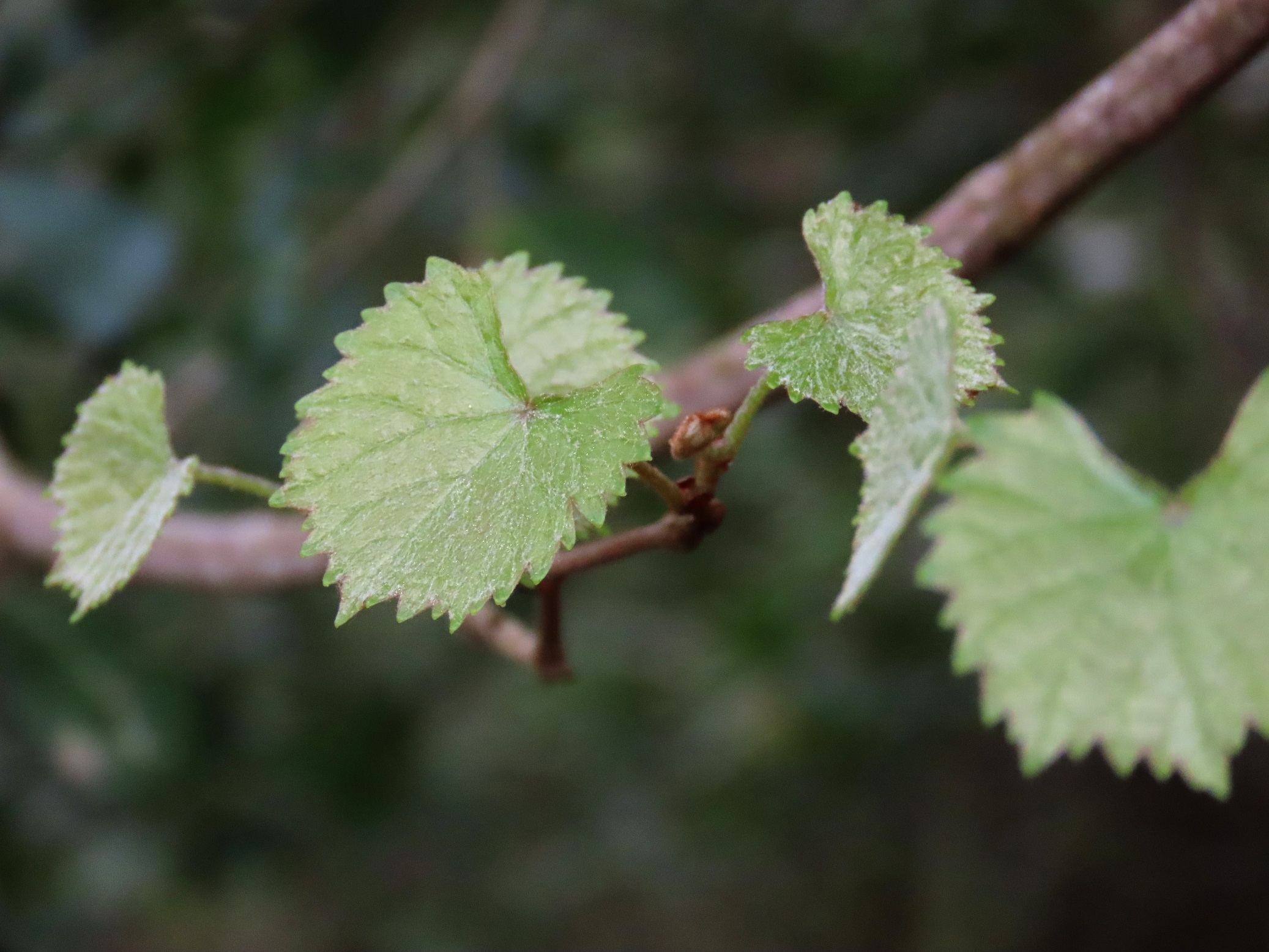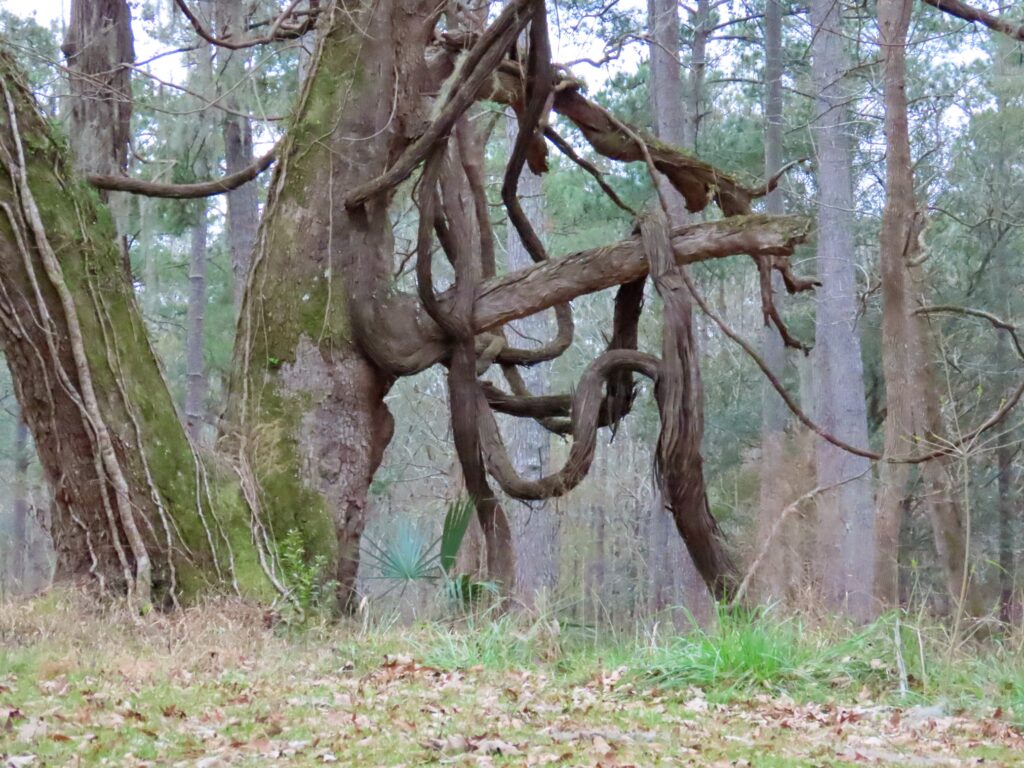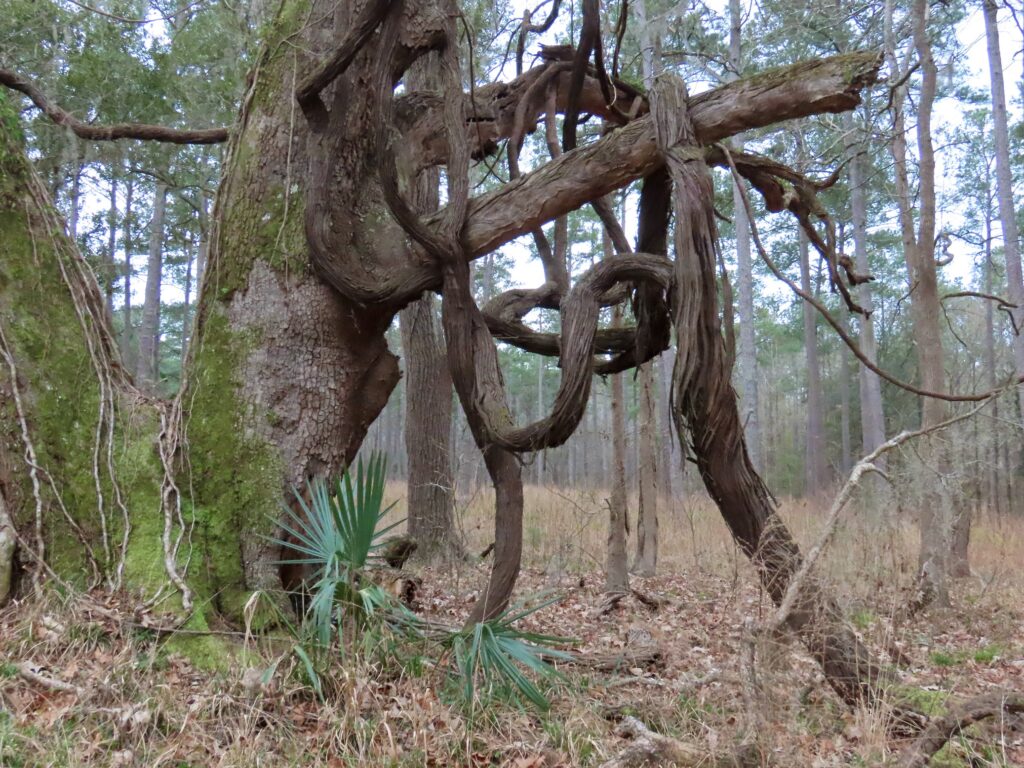




This week for Flora and Fauna Friday we have a hardy, high-climbing liana with a much celebrated southern fruit: Muscadine (Vitis rotundifolia).
Muscadine is a native species of grape found throughout the Southeast. It’s one of five species of grape native to the Lowcounty. Some of those grape species can be tricky to tell apart but, thankfully, Muscadine is by far the easiest of the bunch to pick out. Muscadine has round leaves with a coarsely serrate sawtooth margin and a glossy, smooth surface. That roughly round shape, hairless surface, and their smaller size compared to other grapes makes their leaves the fastest way to ID the species. Their vines have a furrowed bark with a warm reddish-brown color.
Muscadines and our other native Grapes climb with tendrils that wrap around twigs and small stems. They eventually dry into a death grip on whatever they’ve ensnared. Grapes climb up tree trunks and into the canopy, sometimes overtaking their host’s crown. The base of the vine thickens with age and grows outward, like a tree but slower. Over time as the vines grow and, as new tendrils form towards the tip of the vine, old tendrils snap and fall away. The thickening of the vine and shedding of old tendrils causes Grape vines to droop from slack and gravity over time, especially under broad trees like Live Oaks. As the flexible vines settle back towards Earth, they take on a gnarled, twisted form. Like a stiff rope falling back on itself, the vines twist, corkscrew, and interweave with each other. Eventually this shape solidifies as the stem ages. If one of those stems touches dirt, it will root. Sometimes, they don’t even need to touch the ground to root. Muscadines are prone to air rooting when the base of their stem is cut, they experience vascular damage, or sometimes they just do it spontaneously. Cinnamon-red roots dangle down from a vine, which may be ten feet or more high, until they touch the ground. Any root that touches soil will continue growing down and out to form an extra trunk for the vine. Muscadine is an aggressive vine. They can often grow forty or more feet up a tree and then spread across and out its canopy to smother its neighbors. To support this vigorous growth, they need to move a lot of water. If you’ve ever cut an old grape vine off of a tree, you’ve seen that the stump will seep water almost instantly like a spring. Sometimes they’ll weep for weeks on end. Their aggressive growth can be quite damaging to trees from the sheer mass of wood and water they pile up on to it. Yet Muscadine can be a boon for wildlife, and people when cultivated.
Muscadines are best known for their fruit. Wild Muscadines are dioecious, meaning there are male and female vines. Only female vines produce fruit. Grapes are botanically classified as a berry, having multiple seeds inside one soft fruit. Muscadine’s fruits are borne in clusters of just a few and have a thick rind, large seeds, and an exquisite flavor that can’t easily be put into words. Wild Muscadine grapes ripen towards the end of summer and are perfectly edible (and tasty) to humans, as well as turkeys, quail, deer, foxes, raccoon, orioles, mockingbirds, and many other species of mammal and bird. Muscadines have long been cultivated in the southeast and have been selected to create self-pollinating varieties with bigger fruits as well as the pale-colored Muscadines we know as Scuppernongs. The difference between Scuppernongs and Muscadines is a little more technical and specific than that but we’ll stick to just that generic distinction today.